
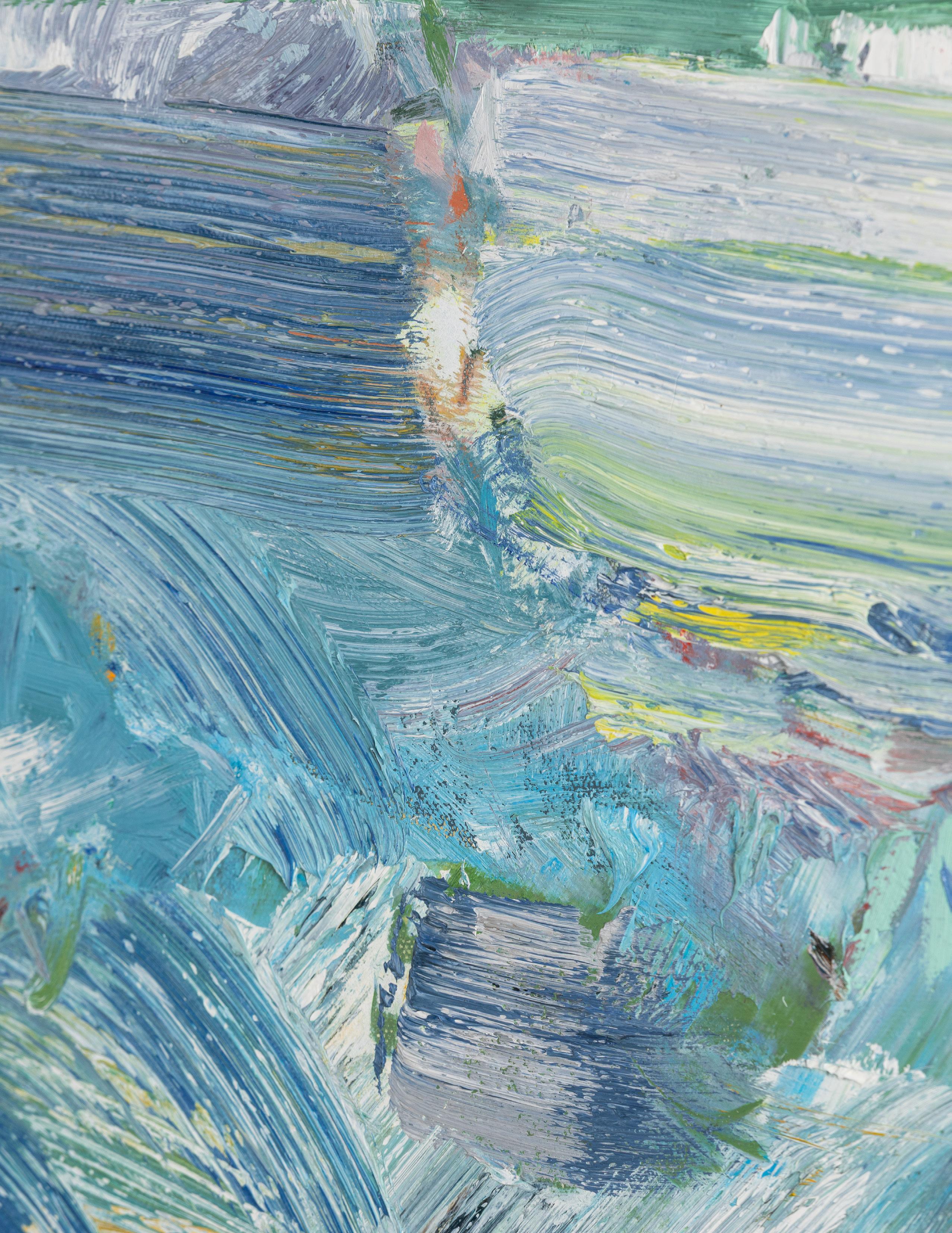
Foreword
Thinking back to how I considered the weather in the past, it was a constant change and an occasional challenge to be worked with. I would often recite the lyrics “And I never never ever do a thing about the weather, for the weather never ever does a thing for me” (which were sung by the Dodo in Disney’s Alice in Wonderland) on days when quick changes in temperature, rain, or otherwise seemed to be against my plans. At other times, I would marvel in awe at the power of natural forces unleashed in the atmosphere, especially when watching the series of Weather Diaries filmed by George Kuchar in Oklahoma City during the 1980s. Today, extreme weather is an everyday occurrence on the evening news, with each broadcast eliciting feelings of anxiety and the need for diligent preparedness. The paintings in John Santoro’s exhibition capture a mixture of these emotions within each canvas. The difference here is the movement and drama is arrested in thick brushstrokes of oil paint, allowing for controlled reflection and consideration.
I give my greatest thanks to John Santoro for creating the beautiful series of paintings in his exhibition and this catalogue, and for his continued partnership with Paul Thiebaud Gallery to present his work. I also thank my fellow team members at Paul Thiebaud Gallery – Colleen Casey, Matthew Miller, and Gregory Hemming – for their continual hard work and dedication in making this exhibition and publication possible.
Greg Flood, Director October 2025
opposite: Popeye and the Sea Sprite (detail)



Plate 1:
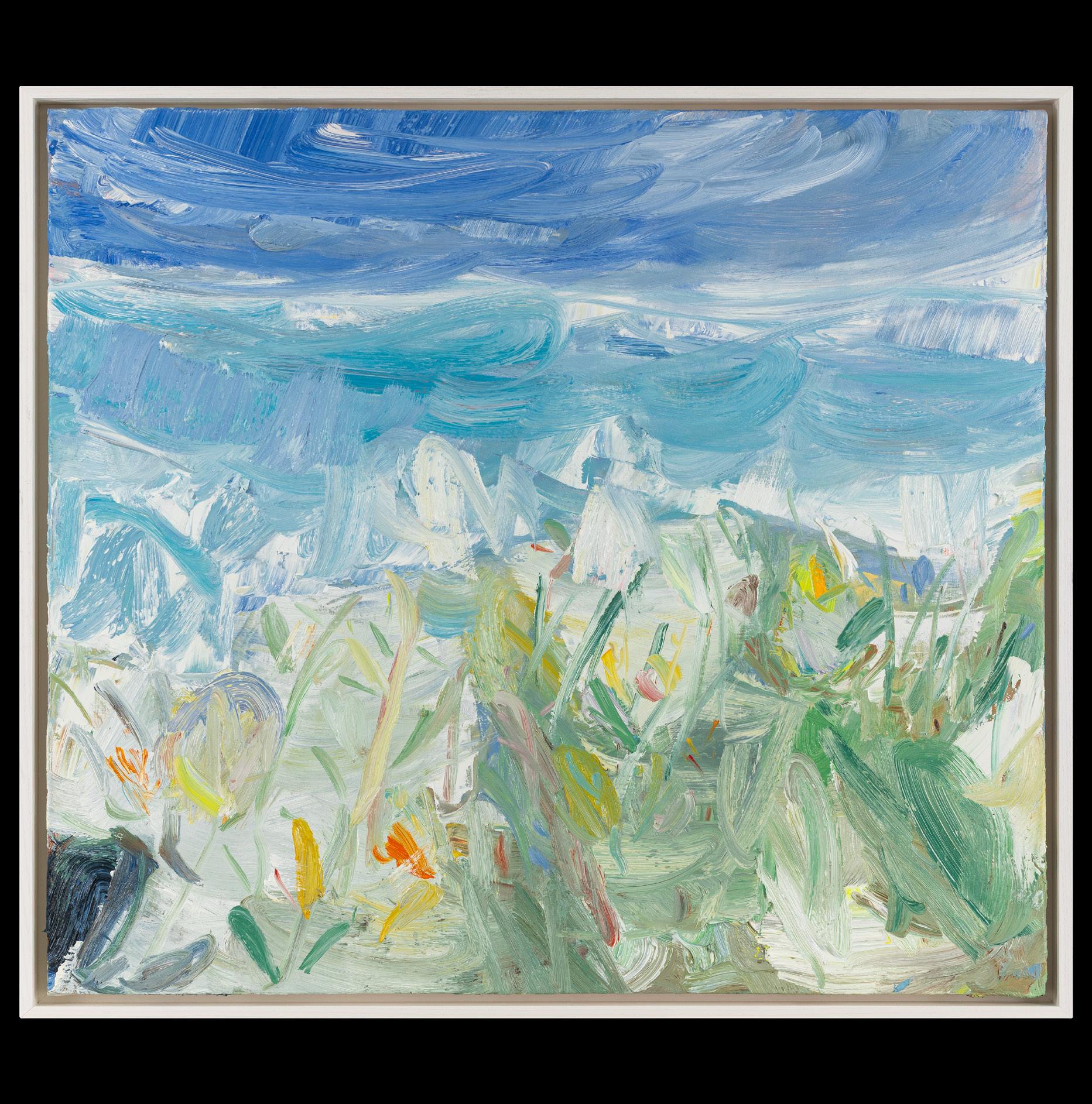
On Heavy Metal and Extreme Weather… A Few Words with John Santoro
What inspires a painter to put brush to canvas? Do other aspects of an painter’s life alter the formation of their work? How do their paintings evolve over time, and why? The answers to these questions, and others, are the fuel that feeds the creative fires behind the best painters of our time. On the occasion of his newest exhibition at Paul Thiebaud Gallery, artist John Santoro sat down with the gallery’s Director, Greg Flood, to discuss the development of his career and the inspiration behind his newest paintings. The following is a record of their conversation, which has been lightly edited for clarity.
Greg Flood: When did you first know you wanted to be a painter?
John Santoro: I started college at Northern Illinois University as an Illustration major, but soon realized it was not for me. The freedom that a ‘Fine Art’ major offered was attractive. For me, abstract painting was the vehicle I used to divorce myself from the mind set of realistic drawings of rock stars, monsters and heavy metal album cover imagery.
GF: What were your experiences like going to school at Northern Illinois University and later the University of Chicago?
JS: At the time, Northern Illinois University had a great radio station and it was an eye opener. Until then I was only exposed to classic rock on all the big FM stations. College radio focused on all the underground music I had never heard before. The University of Chicago took it up a notch. Goth, Industrial, and Punk music were just hitting the scene, bands like Joy Division and Killing Joke, to name a few, blew me away.
GF: In the first ten years or so after graduating with your MFA from the University of Chicago, your paintings had recognizable imagery in them, as well as a playful humorous quality. What were the origins of these works?
JS: My B.F.A. show was mostly abstract paintings. I was really influenced by the CoBrA1 painters: Asger Jorn and Karel Appel were two of my favorites. My M.F.A. show had a noticeable nod to Neo-Expressionism which was the hot art trend at the time. I decided to give my work more narrative content. The imagery was primitive and a bit on the dark side – a bit forced perhaps – but I wanted to capture the intensity of the music I was inspired by. continues on pg. 13

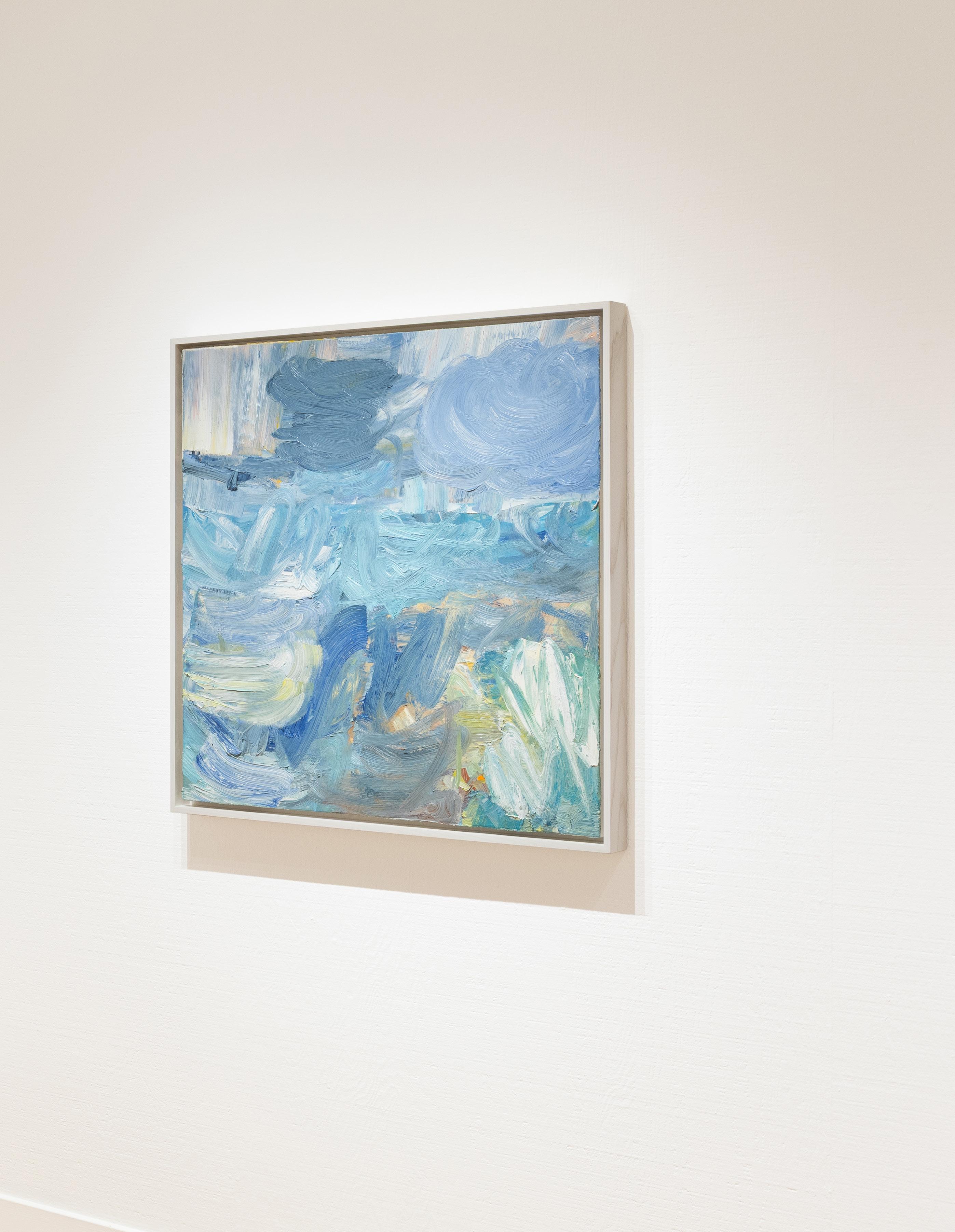


It was not until after graduating that I realized my work was devoid of my sense of humor, so I dropped all the spooky stuff and focused on more playful imagery. Bubble, Globe, Palette heads, Hotdog cars, and Pee-wee Herman inspired houses became my new focus.
GF: How has your love of music impacted your paintings?
JS: Music is both inspirational and motivational. In the late 1980s when I was exposed to Public Enemy, I had heard nothing like them before. The power of Chuck D’s voice combined with their complicated rhythmical blends of Hip Hop, Heavy Metal, R&B and Funk created an awe-inspiring wall of sound. Steve Albini (1962-2024) was a living legend in Chicago. Both his own bands like Big Black & Schallac and the countless bands he ‘audio engineered’ (as he hated the term producer) took post-hardcore and noise bands to a new level. I am still trying to capture the energy of music in my paintings. Some of the same terms used to describe music, like tension and repose, can (hopefully) be applied to my paintings – funky, joyful, energetic, uplifting, intense, and expressive, to name a few.
GF: When did you decide on painting with heavy impasto, and why?
JS: My mother would regularly take me to the Art Institute of Chicago. Most everything went over my head, though, as I was just a young boy. It is embarrassing to admit now, but I clearly remember liking a painting by Georges Mathieu. His work had an aggressive confidence I somehow related to. I could not believe a painter could just squeeze paint directly from the tube and just smear it all over. Big blobs of paint just hung off of his canvas. It was something about the physicality of the raw paint that captured my imagination. Now, I am intentionally focused on impasto. For me, creating an image that can only be made of paint, and which focuses on the physical nature of the paint, imbues the canvas with a unique aura and presence.
GF: When did you begin painting landscapes and extreme weather, and what led you to make this change in subject matter?
JS: It was something of an epiphany some 25, or so, years ago. I was sitting in my backyard during a beautiful summer day. A gentle breeze was blowing and flowers wobbled peacefully. I thought, “This is so simple, so serene, so beautiful.” In that simplicity, I found infinite possibilities, and that I did not need to go any further than my own backyard for content. A simple horizon line was all I needed for a landscape and everything else was possible. Extreme weather has now become a regular occurrence. It gives me some of that intense,
but playful content I enjoy. Weather terms like ‘El Niño’, ‘Polar Vortex’, and ‘Thunder Snow’ could double as bad Heavy Metal band names, but they give me options to use more contrast in tonality and color. They also open possibilities for content that is both playful and a little dangerous.
GF: Who are the artists that inspired you and what is it about their work that resonates when you look at it?
JS: That has changed over the years, but right now it is Henri Matisse and Richard Diebenkorn. I love that their work is clearly ‘a painting’ – both modern and abstract – but with a representational image as a source. As far as pure painting goes, I cannot get enough of John Singer Sargent. His paintings have a hyper-realistic effect from a distance, but up close they are just painterly brush strokes. Sargent’s mastery of value and light is astonishing.
GF: Your paintings have pretty much always had abstract elements woven through the compositions. What has led to the increase of abstraction in your most recent paintings?
JS: I suppose it was working on a larger scale. I wanted this new body of work to have a freshness and an openness. I wanted them to have an organic flow and not be over labored or heavy.
GF: Where did you get the exhibition title “Mud Time and the Sprites of Spring” from?
JS: “Mud Time” is inspired by the Joan Mitchell painting Mud Time (1960) that I saw at her retrospective at SFMOMA in 2022. As I turned a corner in the exhibition, I was struck by the presence of one of her masterpieces, a painting I had never seen before. I took it in from a distance and I was compelled to check the title. I almost laughed out loud when I saw it was called Mud-Time. I absolutely loved it and knew I had to steal it! Mitchell’s title was derived from Robert Frost’s poem Two Tramps in Mud Time, which was written in 1934. In it, Frost describes both the effects of weather in April and mankind’s tension between the love for work and need for gain in human existence.
In the late 1980s in Chicago, I was fortunate to see a Roy De Forest exhibition at a local gallery and was particularly moved by a painting titled Muttly and the Wood Sprite Situated in the lower right of the compositions was a menacing, yet friendly, looking green character -continues on pg. 18




‘The Wood Sprite’. This image has stuck with me ever since, but had been filed into my deep memory. It was only after recently painting spring foliage and beach grasses, and pushing the anthropomorphic possibilities, I unearthed the memory of the Wood Sprite. I decided to use it in my titles as homage to Roy Deforest.
“The Sprites of Spring” is an obvious play on the title of Igor Stravinsky’s ballet The Rite of Spring, which was described by him as “The mystery and great surge of the creative power of Spring.” As a boy in the 1970s, I saw Disney’s Fantasia in a movie theater. When I went in, I had no idea what to expect. As a huge fan of dinosaurs – at the time they were limited in my imagination by the stiffly illustrated dinosaurs in books – I was starved for an accurate animated dinosaur battle. With its violent upheavals, the soundtrack perfectly fits the climax scene for the epic battle between an Allosaurus and a Stegosaurus. This blew me away. At the time it was the coolest thing I had ever seen.
GF: Having lived your whole life in northern Illinois, do you feel that your location has had impact on your work?
JS: The change of seasons continues to inspire me. Spring is my favorite season. It is nature’s yearly renaissance. Snow is likely on the ground, mud is everywhere, green buds pop up all over, and flowers are emerging. It has so much optimism. Midwestern landscapes, Lake Michigan, and extreme weather are my inspiration, and they serve as the armature I build my paintings around. I use the painting techniques of the Abstract Expressionists to capture the energy of the moment, and the energy of my sources. My images are clearly made with paint, intentionally challenging, intentionally provocative, a bit weird, subtly surreal, funny, goofy, and, as with the example Roy De Forest’s ‘Wood Sprite’, a tad menacing.
GF: Where do you see your heading in the next few years?
JS: I intend to push the abstract possibilities with both weather patterns and landscapes. I have considered a return to playful imagery, but at the moment these ideas exist in new drawings. As for new paintings, we will have to wait and see!

1 CoBrA was a European avant-garde art movement active between 1948 and 1951. Its members included Karel Appel, Constant Anton Nieuwenhuys, Guillaume Cornelis van Beverloo, Christian Dotremont, Asger Jorn, and Joseph Noiret. The movement evolved from criticisms of western society and a desire to break away from existing art movements, including naturalism, abstraction, and especially Surrealism. Instead, the CoBrA members prized experimentation, spontaneity, and found inspiration in the drawings of children, ‘primitive’ art forms, and the works of Paul Klee and Joan Miró. The name CoBrA comes from the first letters of the capitals cities in the member’s home countries: Copenhagen (Co), Brussels (Br), and Amsterdam (A).

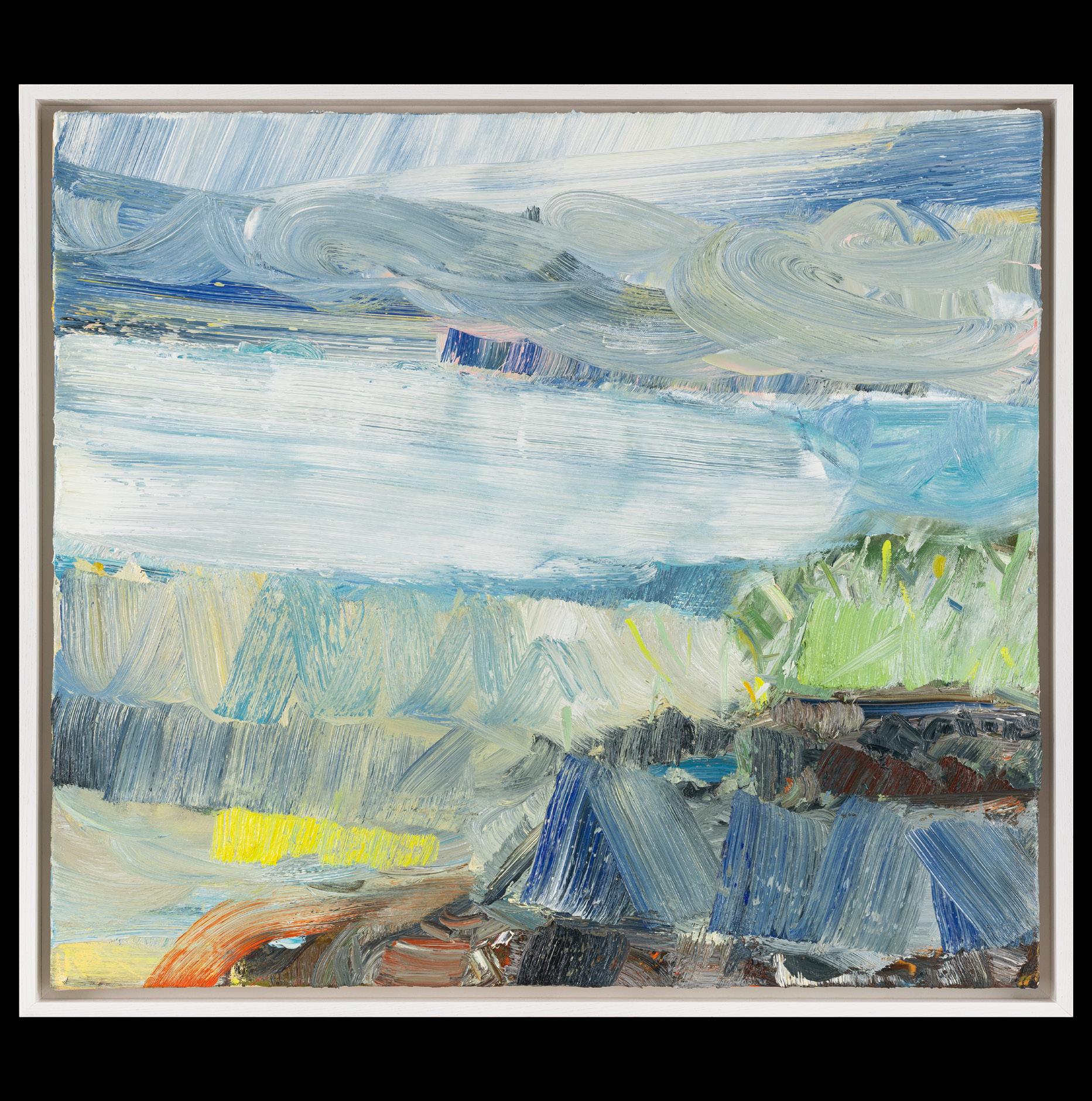
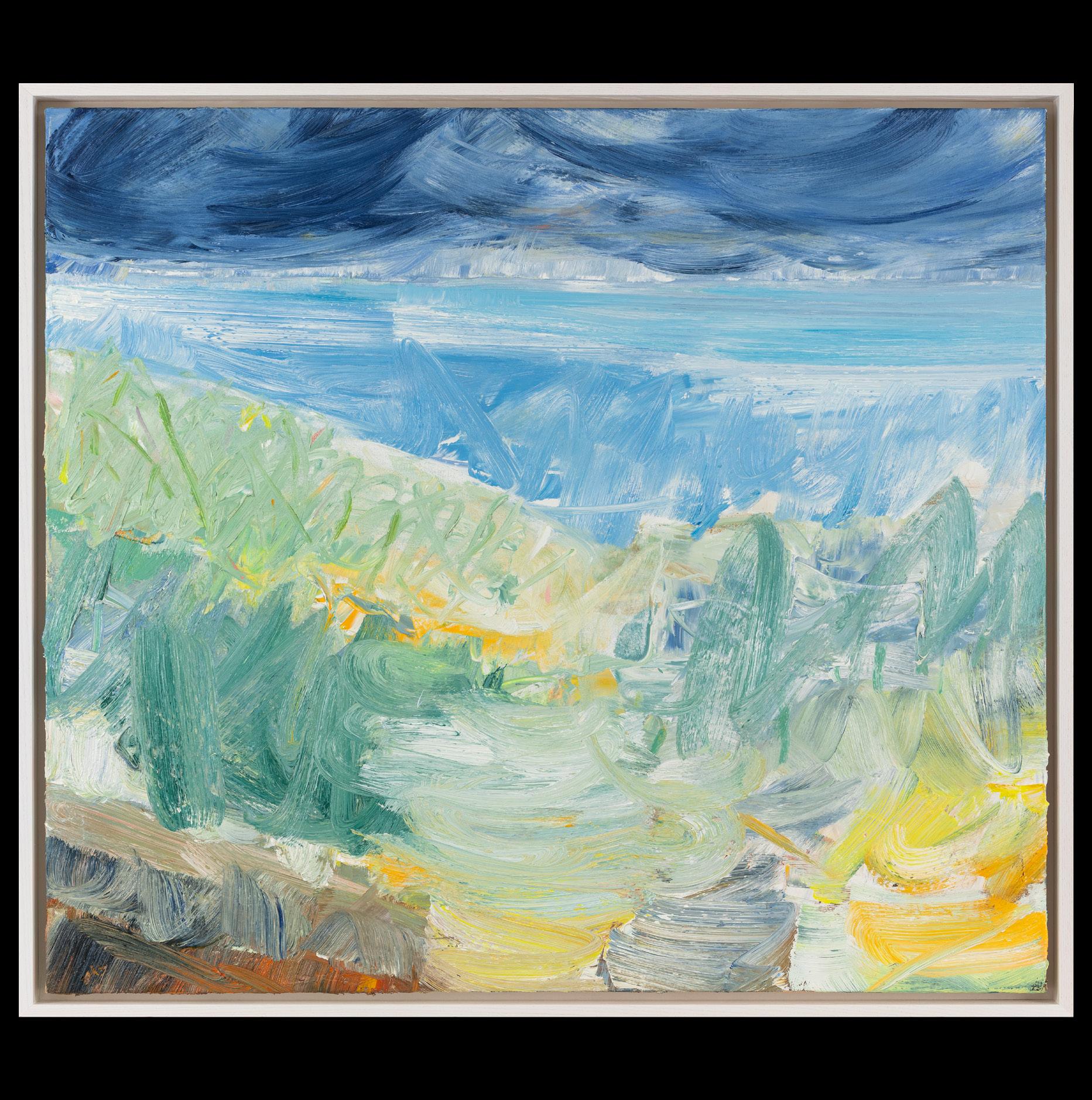











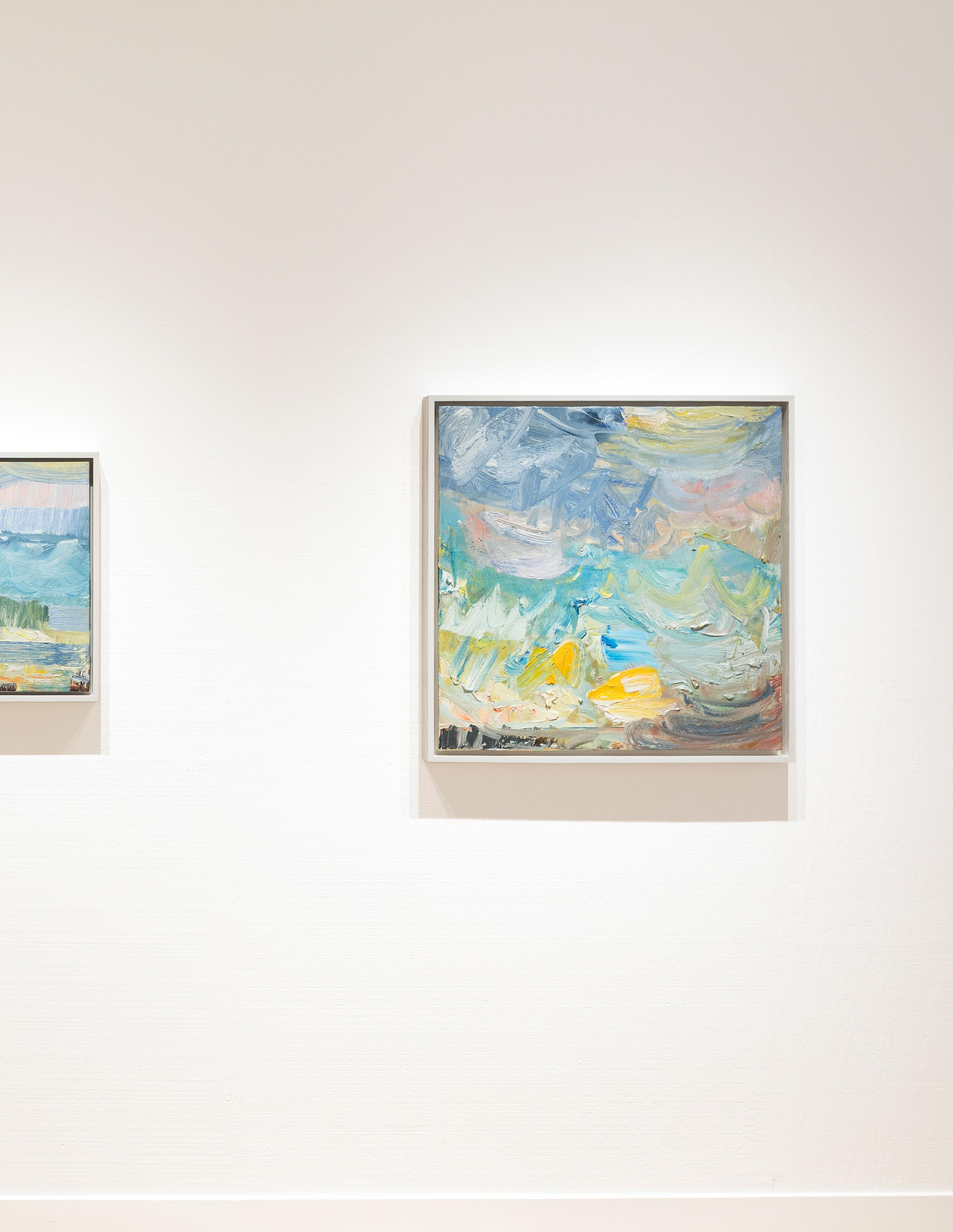



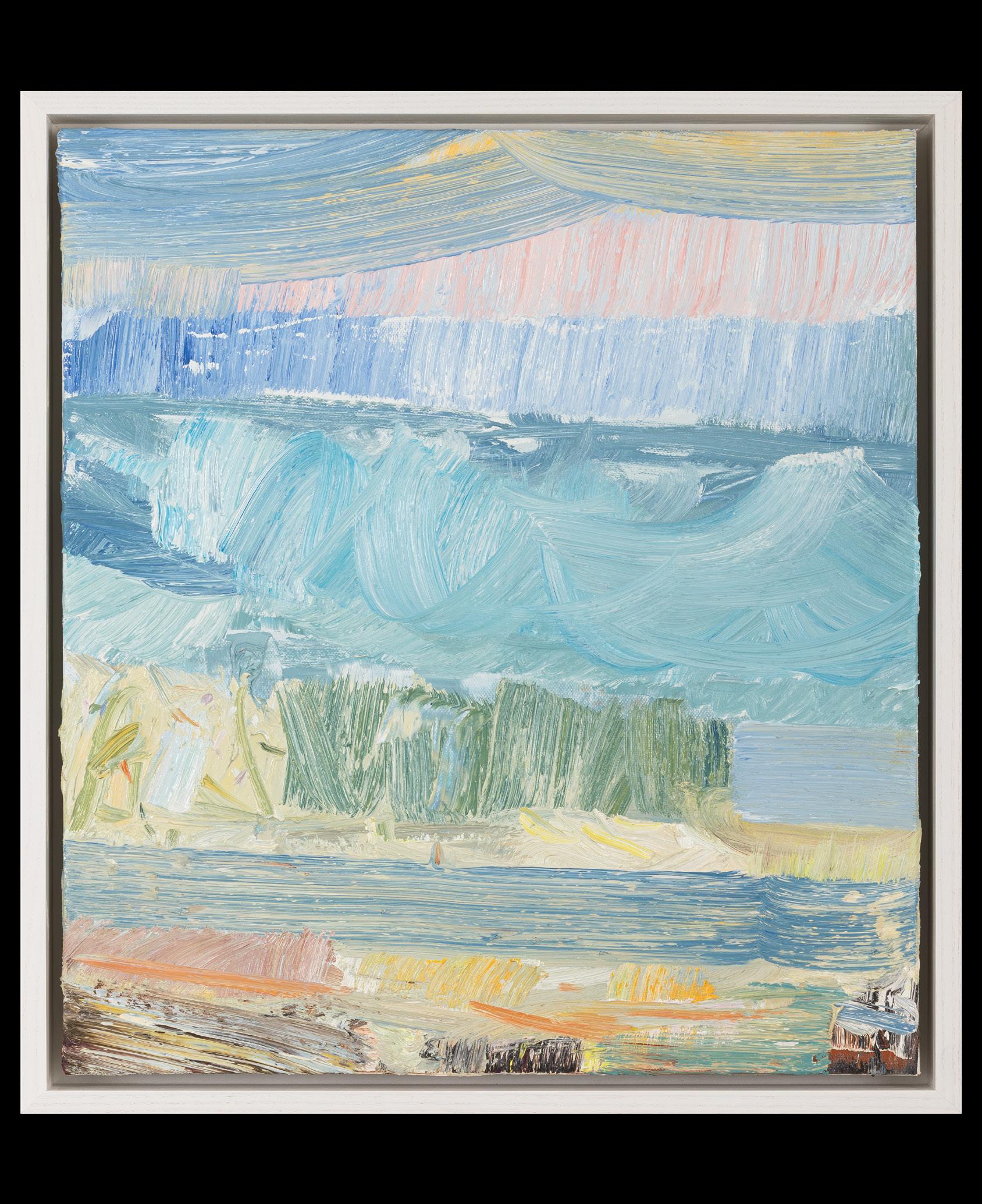

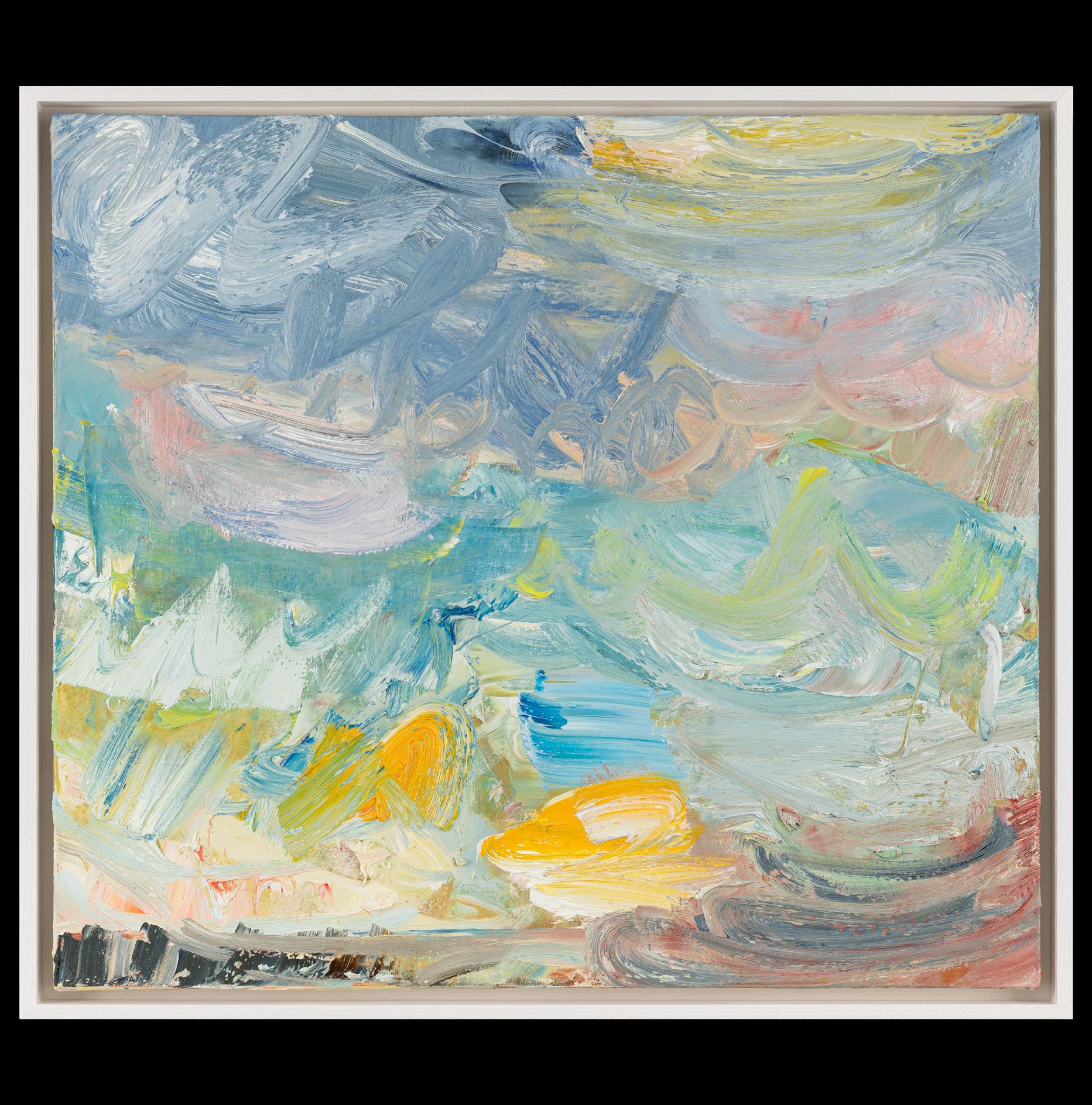


Plate 13:

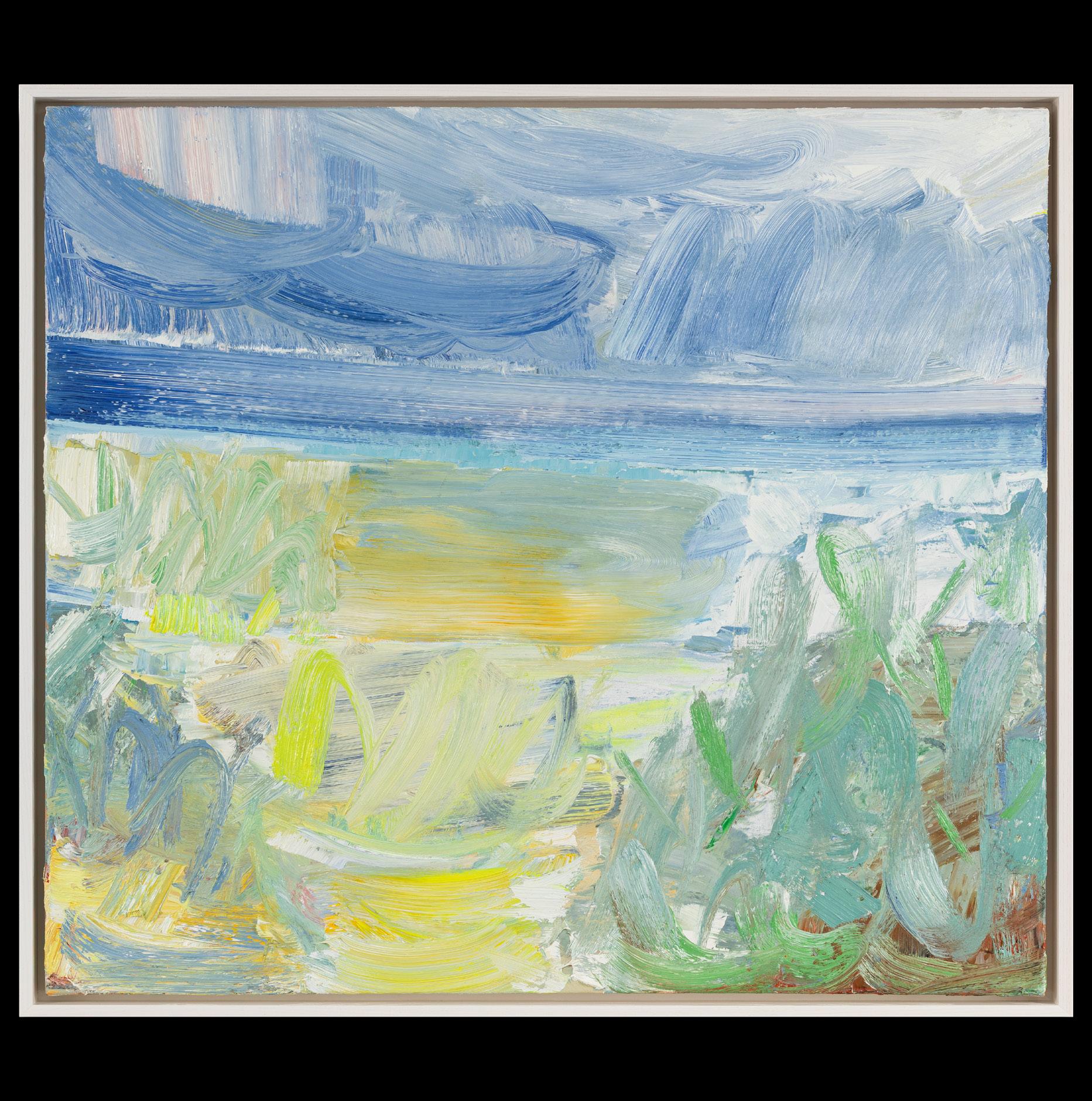
Plate 14:

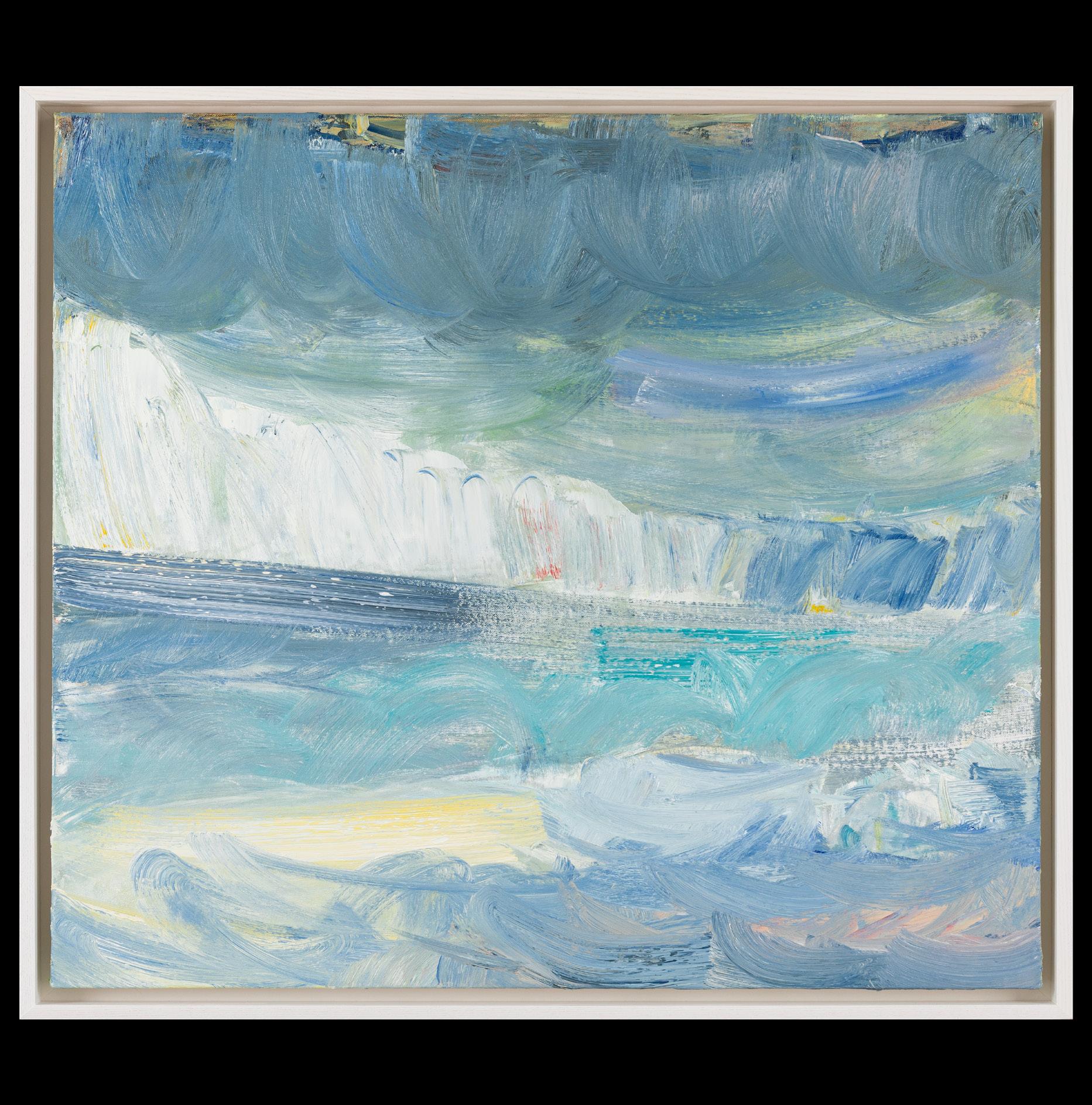
Plate 15:

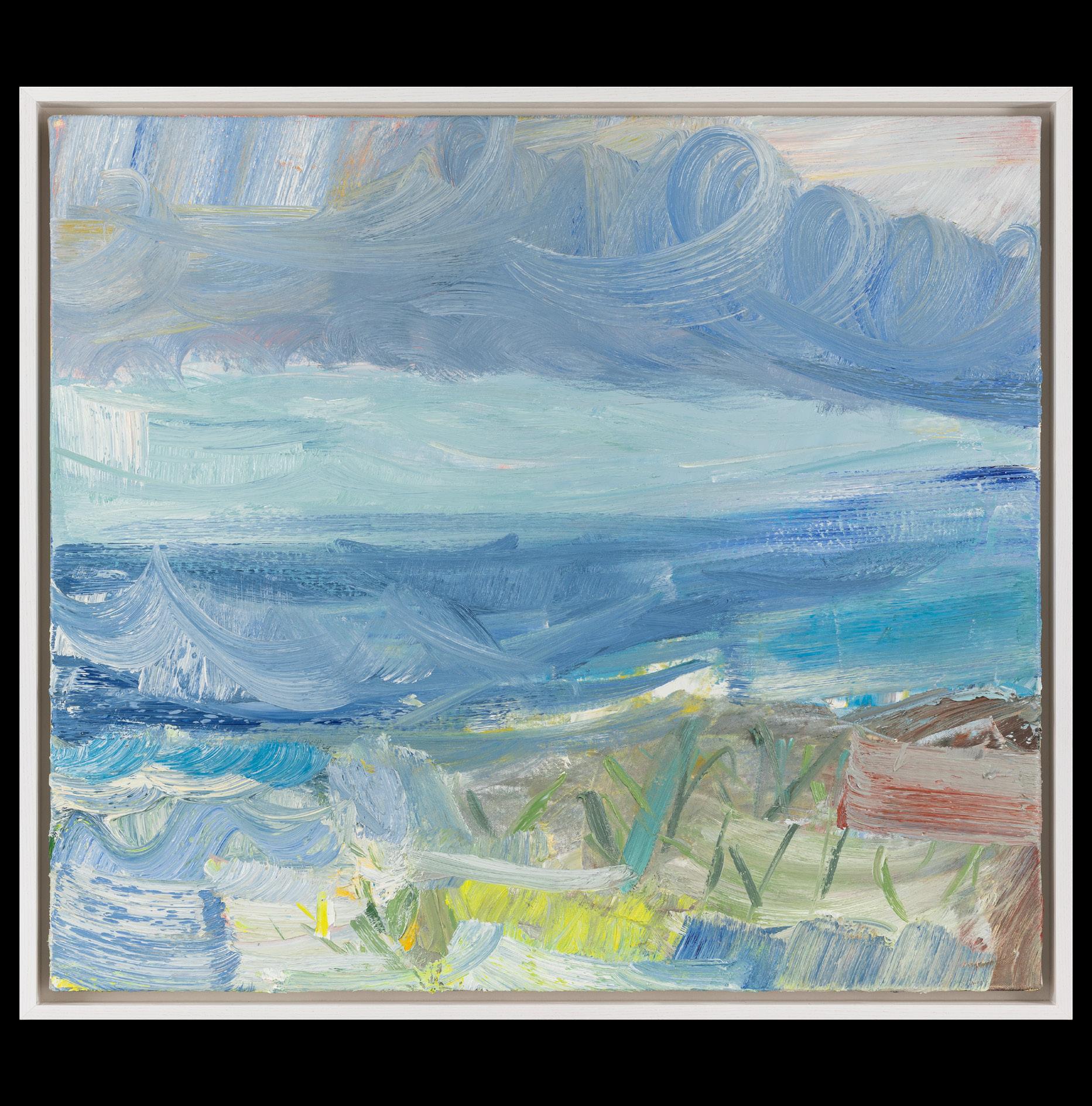
Plate 16:


Plate 17:


Plate 18:


19:


Plate 20:


Plate 21:








Exhibition Checklist
Plate 1: The Sprites of Spring 2025 oil on canvas 36 x 36 in.
Plate 2: Lemon Beach Sprite 2025 oil on canvas 24 x 24 in.
Plate 3: Penelope, the Sea Sprite 2025 oil on canvas 36 x 36 in.
Plate 4: Blue Bird 2025 oil on canvas 30 x 30 in.
Plate 5: Mud Time and the Sand Sprite 2025 oil on canvas 36 x 36 in.
Plate 6: Mud Time and the Sand Sprite 2025 oil on canvas 36 x 36 in.
Plate 7: April Snow 2024 oil on canvas 14 x 11 in.
Plate 8: Mr. Mud Time 2025 oil on canvas 30 x 30 in.
Plate 9: Avalanche 2023 oil on canvas 24 x 24 in.
Plate 10: Sandy Rollers 2025 oil on canvas 30 x 30 in.
Plate 11: Mini Mud Time 2025 oil on canvas 20 x 16 in.
Plate 12: Turner Sea Storm 2025 oil on canvas 30 x 30 in.
Works not Exhibited
Plate 13: Mud Time and the Lemon Sprite 2025 oil on canvas 36 x 36 in.
Plate 14: Cloud Mountain 2025 oil on canvas 30 x 30 in.
Plate 15: Aqua Sky and the Lemon Sprite 2025 oil on canvas 30 x 30 in.
Plate 16: April Snow Sprite 2024 oil on canvas 28 x 24 in.
Plate 17: Poseidon and the Tiny Sprite 2025 oil on canvas 24 x 24 in.
Plate 18: Popeye and the Sea Sprite 2024 oil on canvas 24 x 24 in.
Plate 19: The Sprite of Spring 2025 oil on canvas 16 x 20 in.
Plate 20: April Snow #2 2025 oil on canvas 14 x 11 in.
Plate 21: April Snow #3 2025 oil on canvas 14 x 11 in.
Plate 22: Winter Sprite 2023 oil on canvas 24 x 24 in.
Plate 23: Summer Sprite 2023 oil on canvas 24 x 24 in.

